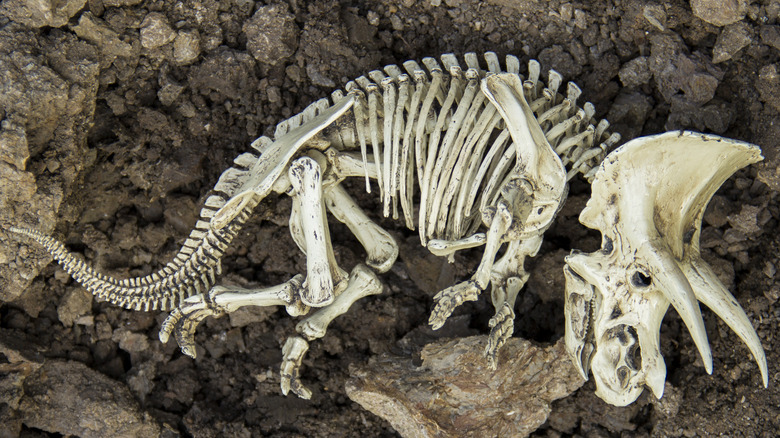Montana's Largest State Park Is A Wildly Underrated Gem Well Worthy Of National Status
Montana is filled with natural beauty and a sense of wilderness, something highly sought after in the modern world. It is home to nine national parks and 55 state parks. Of these, the most notable is Glacier National Park, known for its unmatched beauty in the form of meadows, valleys, lakes, and the awe-inspiring glaciers that tower over it all. With many tourists traveling to Montana to explore Glacier, other lesser-known locations are overlooked and underrated, especially those on the opposite side of Montana. One park in particular, despite its impressive size and expansive views, doesn't get the attention it deserves: Makoshika State Park.
Unlike Glacier's green valleys and lakes, this location is comprised of badland formations including tall, flat boulders, steep canyons, and spires reaching up to the sky. Visitors exploring this epic wilderness may be surprised that despite its historical, scientific, and natural significance, it isn't run by the National Park Service (NPS).
Makoshika doesn't have national status, but not because it was overlooked. Originally proposed as badlands, the site was first offered up to the NPS in 1938, but they declined the land. Montana was donated the property and turned it into a state-run area, which now covers nearly 12,000 acres. Thankfully, while there are some differences between state and national parks, the experiences are equally enjoyable when it comes to enjoying nature and experiencing the outdoors.
Things to do in Makoshika State Park
Makoshika doesn't just offer an exciting place to explore. Throughout the year, there are all sorts of events held inside the park. Campfire nights during the summer are a popular event, as well as festivals featuring corn hole tournaments, marathons, and train rides. There is even a professional disc golf course in a secluded area of Makoshika.
The park is sometimes open after normal hours to help share more information about the night sky and provide full moon hikes to anyone who wants to hike under the stars. Though it can't make it on a list of the best national parks in America for stargazing, as it's only state-run land, it is a designated dark sky zone offering plenty of chances for tourists to see the stars.
The underrated Makoshika is also where several fossils were found and is a significant part of the Montana Dinosaur Trail. A total of 10 different species from the late Cretaceous period have been discovered throughout the park including a triceratops skull, the remains of Edmontosaurus, T-rex, and a nearly complete Thescelosaurus. Visitors will also find evidence of the K-T, or Cretaceous-Tertiary period, boundary line, which is from about 65.5 million years ago. While tourists can't dig for fossils themselves, there are opportunities to get involved in educational programs run by paleontologists.
How to get to Makoshika State Park
Makoshika State Park is on the east side of Montana, just south of Glendive. Once you're in the city, it's easy to get to, as all you have to do is follow the numerous signs to the southeastern part of the city limits and you'll be at Makoshika. Despite the size and numerous attractions, the entrance fee isn't all that expensive. Residents of Montana who pay the state parks fee in their vehicle registration can get in for free.
For those that don't pay for the state parks pass, or who aren't residents, the day use fee is $8 per car. If you are walking, biking, or riding a bus, the price drops to $4. Makoshika also has camping sites, for which there are a few different options with various amenities. Depending on what you're looking for, a campsite can cost anywhere between $4 and $34 per night.
There are plenty of different trails to check out inside Makoshika, too. While many of them are of moderate difficulty, several are easier to navigate. It is beautiful to visit at any time of the day, but longer hikes are especially exciting as the rock formations appear to change color as the light shifts. You can visit Makoshika at any time of the year, but if you want to avoid extreme weather conditions and get a chance to participate in the annual programs, the best window to visit is between May and September.


